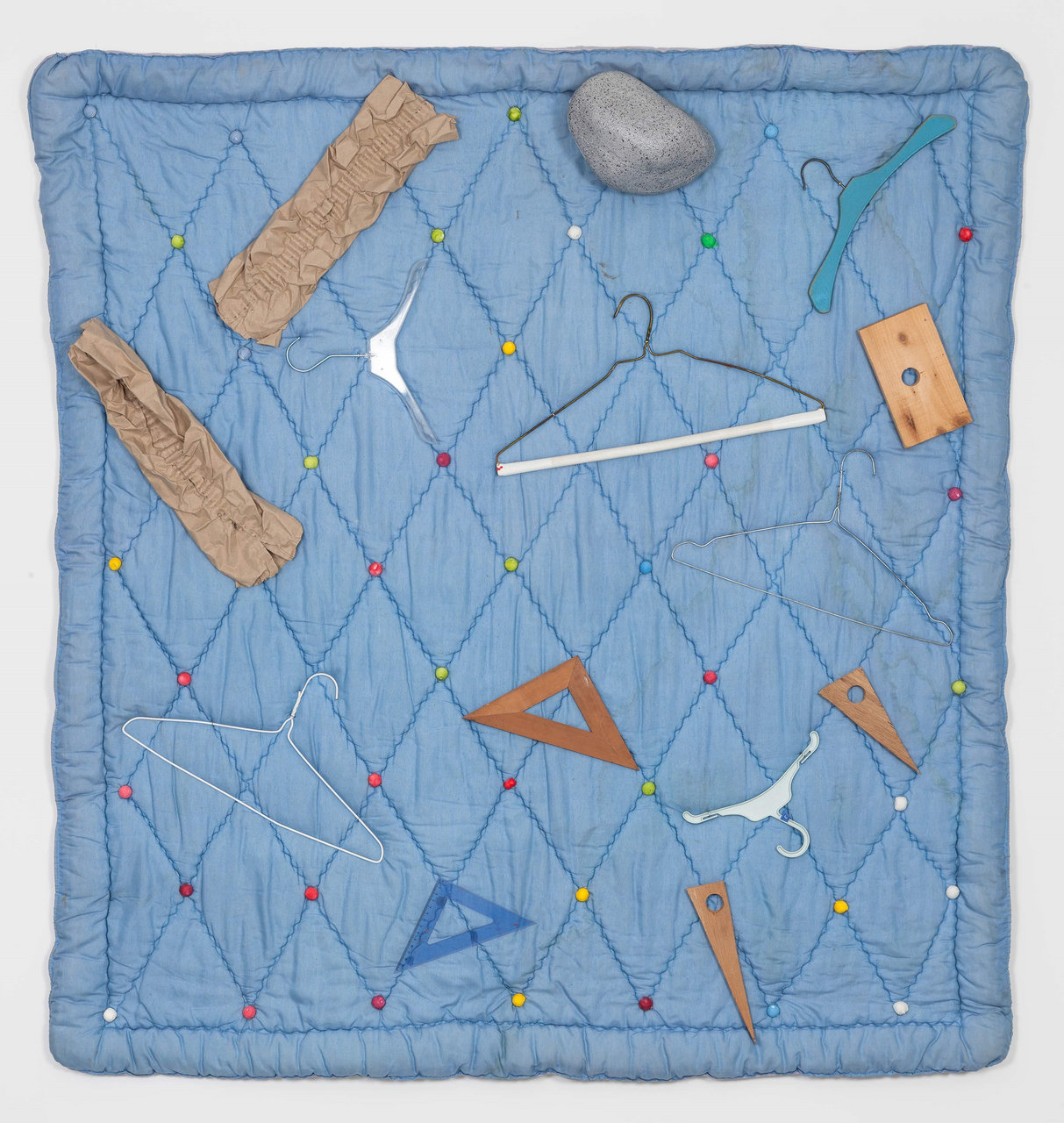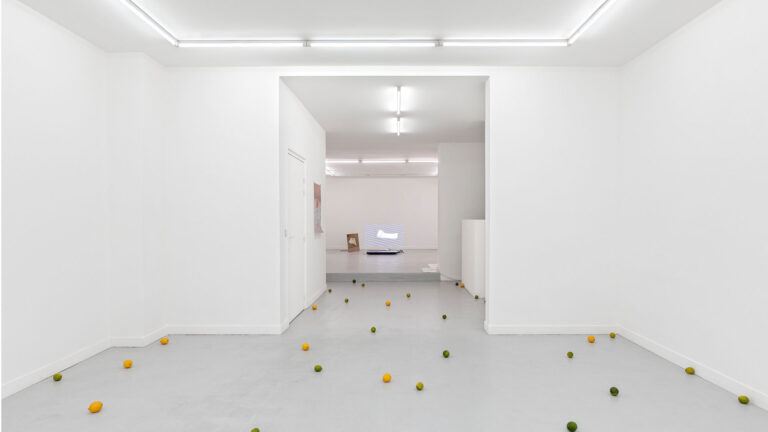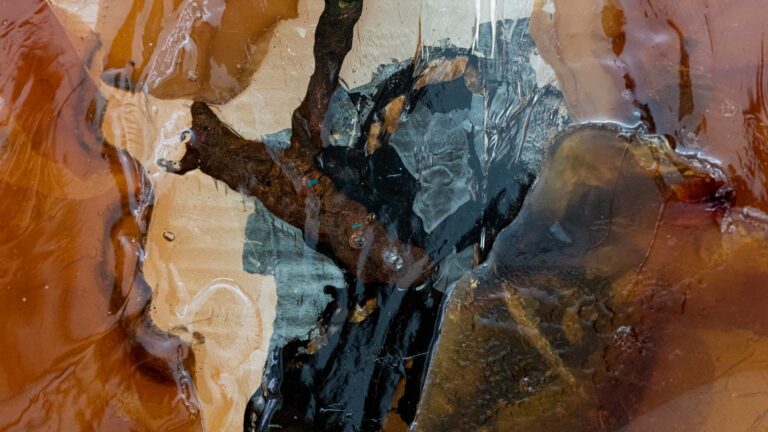Artist: Kapwani Kiwanga
Exhibition title: Cima Cima
Venue: Le Crédac, Ivry-sur-Seine, France
Date: April 27 – November 7, 2021
Photography: © Marc Domage / Le Crédac, all images copyright and courtesy of the artist and Centre d’art contemporain d’Ivry – le Crédac
The exhibition title, Cima Cima, refers to “Cimarrons” or “Maroons”, terms of Arawak origin, which were included in Spanish language to refer to people living in conditions of slavery, who liberated themselves in the Americas. Once emancipated, these women and men implemented strategies to preserve their freedom. This included establishing precarious villages ready to be abandoned, sustenance agriculture allowing for their survival, and the cultivation of plants, brought along from their local land, to be adapted to a new environment.
Cima Cima thus raises the question of deliberately concealed actions allowing for survival. It addresses the history of forms of resistance, and the practice of creative unruliness as a way of ensuring freedom. It is precisely the cultivation of plants and their role as witnesses of human history that interests the artist here, as well as their sometimes ambivalent function: the plant that nourishes, the plant that heals, but also the plant that kills either indirectly or deliberately as poison.
In the main exhibition room of Crédac, Kapwani Kiwanga proposes Matières premières [Raw materials] (2020), a forest of raw paper, made from sugarcane fibre. The floor-to-ceiling sheets of paper prevent one’s understanding of the space at first glance and invite the public to a constrained route. Fragments of reforged sugarcane knife blades are occasionally grafted onto the paper, which, coupled to the hindered movement, evoke oppressive sensations.
In the second exhibition room, Kiwanga invites, Noémie Sauve — an artist supporting Clinamen’s Agricultural Contemporary Art Fund (an organisation accompanying farming practices through the dissemination of artworks), presents three pencil drawings from the series motif vivant [living pattern] (2018 – 2020 – 2020), containing saved tomato seeds.
Partially concealed and facing the picture window, a field of Oryza glaberrima rice is installed within the space. According to oral (hi)stories, African rice travelled to the Americas concealed within the hair of West African people, who were forced into the state of slavery. This history of Oryza glaberrima has survived orally. The plant is grown in the North of South America thanks to these people’s know-how.
Léonard Nguyen Van Thé, a landscape architect and gardener, assists Kapwani Kiwanga throughout the exhibition to cultivate the rice at Crédac.
In the same exhibition room, a recent work of the artist produced for the Renaissance Society in Chicago is presented: a tapestry wherein glass replicas of the grains of Oryza glaberrima rice are sewn into the fabric, recalling the transoceanic journeys.
The series Lazarus, four white silkscreen prints on paper, is also in this second room. These works by Kiwanga take 19th and 20th century illustrations depicting “Lazarus taxa” — animal species that were thought to be extinct and that reappeared in nature after many decades.
The third room presents the work The Marias, recently shown at the Kunstinstituut Melly (Formerly known as Witte de With Center for Contemporary Art). This piece consists of two colored paper reproductions of a Caesalpinia pulcherrima, also known as a peacock flower. This plant, native to the Americas and the Caribbean, is shown as a budding branch on a first plinth, and a flowering branch on a second base.
Widely cultivated as an ornamental plant today, this plant was used for its abortifacient properties, notably by women in conditions of slavery, brought by force to the territories where the peacock flower is endemic. Refusing to procreate in a system created in such a way that these women no longer legally possess their own bodies is a political act and a way of reclaiming this fundamental right.
The work also refers to the history of privileged women in Victorian era Europe. For these women, society did not expect them to work, but rather to occupy themselves with hobbies such as making of ornamental paper flowers, exceptional replicas of the natural flowers from which they draw inspiration. This work thus questions different experiences of conditions of womanhood between the 17th and 19th centuries.
Finally, The Marias focuses on the personal story of Anna Maria Sibylla Merian (1647-1717), a naturalist and painter known for her botanical illustrations and metamorphoses of caterpillars into butterflies in Suriname. Her legacy in the natural sciences is undisputed, but her research journey reminds us of the ambivalent status of these scientific operations whose discoveries are made at the price of a domination of the flora and fauna.
Finally, the video Vumbi (2012) is screened in the Crédakino — the artist is seen cleaning the leaves of a plant wall covered with a layer of red dust in rural Tanzania, thereby revealing the initial green foliage. A print repeating this action in an other location is also exhibited.
Kapwani Kiwanga (born in 1978 in Hamilton) is a Franco-Canadian artist-researcher. Her work focuses on narratives that outline asymmetries of power, highlighting the sometimes unexpected witnesses of these histories. Her visual arts practice seeks to give shape to dormant or unknown archives.
Kapwani Kiwanga, Cima Cima, 2021, exhibition view, © Marc Domage / Le Crédac
Kapwani Kiwanga, Cima Cima, 2021, exhibition view, © Marc Domage / Le Crédac
Kapwani Kiwanga, Cima Cima, 2021, exhibition view, © Marc Domage / Le Crédac
Kapwani Kiwanga, Cima Cima, 2021, exhibition view, © Marc Domage / Le Crédac
Kapwani Kiwanga, Cima Cima, 2021, exhibition view, © Marc Domage / Le Crédac
Kapwani Kiwanga, Cima Cima, 2021, exhibition view, © Marc Domage / Le Crédac
Kapwani Kiwanga, Cima Cima, 2021, exhibition view, © Marc Domage / Le Crédac
Kapwani Kiwanga, Cima Cima, 2021, exhibition view, © Marc Domage / Le Crédac
Kapwani Kiwanga, Cima Cima, 2021, exhibition view, © Marc Domage / Le Crédac
Kapwani Kiwanga, Cima Cima, 2021, exhibition view, © Marc Domage / Le Crédac
Kapwani Kiwanga, Cima Cima, 2021, exhibition view, © Marc Domage / Le Crédac
Kapwani Kiwanga, Cima Cima, 2021, exhibition view, © Marc Domage / Le Crédac
Kapwani Kiwanga, Cima Cima, 2021, exhibition view, © Marc Domage / Le Crédac
Kapwani Kiwanga, Cima Cima, 2021, exhibition view, © Marc Domage / Le Crédac
Kapwani Kiwanga, Cima Cima, 2021, exhibition view, © Marc Domage / Le Crédac
Kapwani Kiwanga, Cima Cima, 2021, exhibition view, © Marc Domage / Le Crédac
Kapwani Kiwanga, Cima Cima, 2021, exhibition view, © Marc Domage / Le Crédac
Kapwani Kiwanga, Cima Cima, 2021, exhibition view, © Marc Domage / Le Crédac
Noémie Sauve as part of Kapwani Kiwanga, Cima Cima, 2021, exhibition view, © Marc Domage / Le Crédac
Noémie Sauve, motif vivant no5, 2020 © Marc Domage / Le Crédac
Noémie Sauve, motif vivant no6, 2020 © Marc Domage / Le Crédac
Noémie Sauve, motif vivant no2, 2018 © Marc Domage / Le Crédac




























